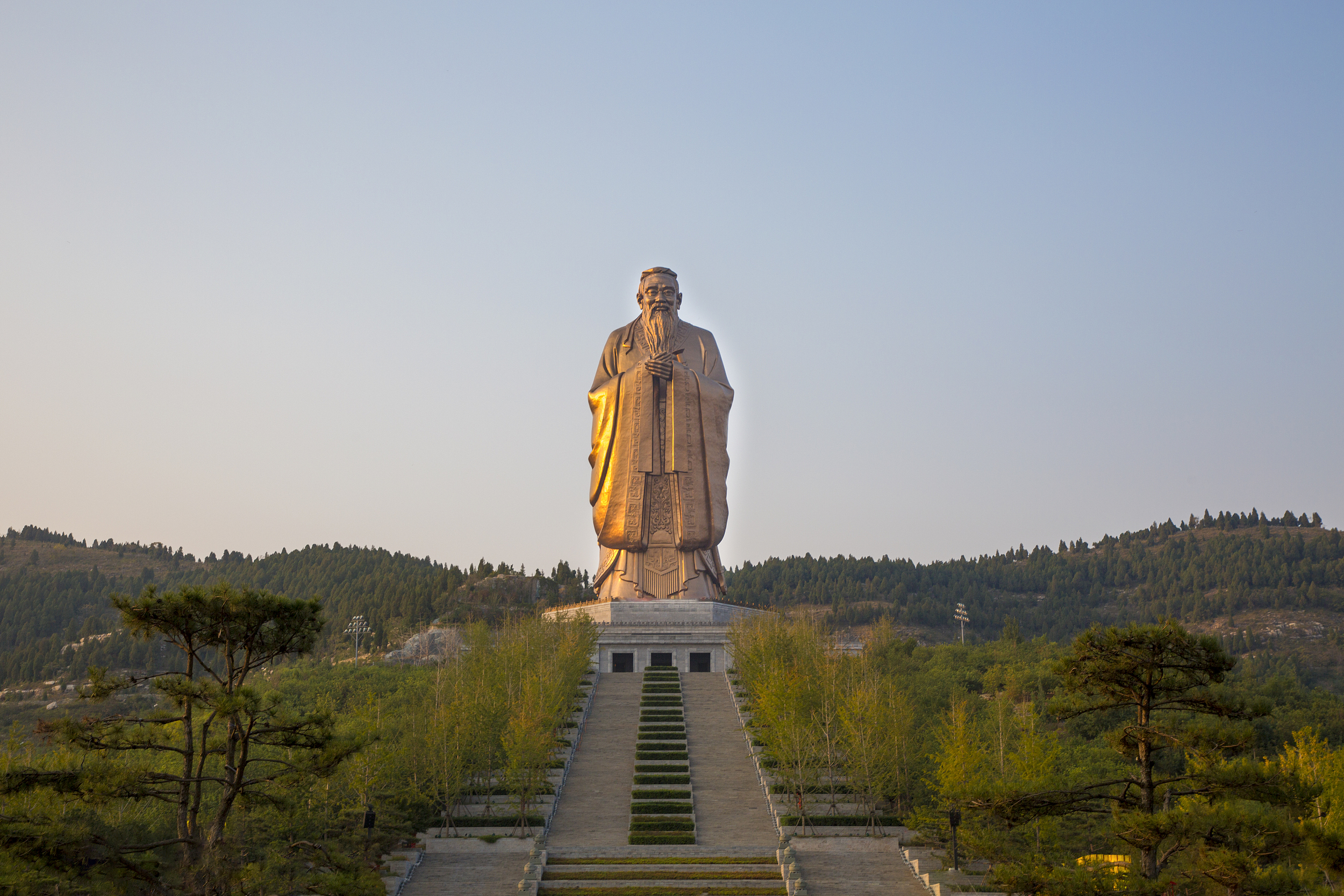https://ph.trip.com/moments/destination-mount-song-178/
2025 Mount Song Travel Guide: Must-see attractions, popular food, hotels, transportation routes (updated in July)
Mount Song Today's weather
Clear 26-33℃
All Trip Moments about Mount Song
Song Mountain ( One of China's Five Great Mountains)
Song Mountains commonly known as "Songshan" is one of China's Five Great Mountains. It is situated in Central China's Henan Province and has a history of over thousand years. This mountains is suitable for adventure-looking individuals! Reaching the top of the mountains is quite a challenge as it will test your endurance and strength. There are a lot of transportation modes that you can choose. Ride a bus from Zhenghzou to Dengfeng and then a taxi from Dengfeng bus station to the foot of the mountain. There are also a lot of people prefer to hike overnight and see the sunrise. Worthy experience! You should try too! #historicallandmarks #henanprovince #songshan #china #summervacationLoree18China is t
China is the place of tradition and modernity, they mix together creating and incredible atmosphere that is a must visit #henan #merrychristmas #unforgettableexperiences #china #happynewyear #happynewyearcamilastraveljournal10Do you lik
Do you like Kung fu? are you interested in seeing the birthplace of it? then Shaolin temple is the place for it! They even have incredible shoes by talented kids and adults. #kungfu #merrychristmas #givethanks #historicallandmarkscamilastraveljournal12Songshan S
Songshan Shaolin Temple, the charm of the thousand-year-old temple is irresistible. The incense in Shaolin Temple is very busy, and there are too many people, it seems to disturb its original tranquility. Songshan, Wuyue Zhongyue, has a great reputation, but this time, he hurriedly took the cable car to one side, but he couldn't see the whole picture. But it doesn't matter, the regret of travel is actually beautiful, and he can give me a reason to sting again.slimj0n4For every
For every Chinese, Shaolin Temple is like a thunder. The famous name of Shaolin Temple began in the early Tang Dynasty. In the troubled times, the Shaolin Temple thirteen sticks made a great contribution to the Qin Wang Li Shimin. They were rewarded by Emperor Taizong, and they were given thousands of hectares. Since then, Shaolin Temple has become famous in the world and has been hailed as the first brake in the world. Since then, the interpretation of Jin Yong's novels, the blessing of the movie "Shaolin Temple", has made this a martial arts holy place that the people of the world yearn for. Many people have not built it in person, and have built it many times in their imagination. Compassion is compassionate, broad and inclusive, martial arts is profound, and mysterious legends have become the impression of most people. The reputation of Shaolin Temple is really loud. The people who participate in the Buddha are from the bottom up. People hold incense sticks and pray in smog, seeking happiness and seeking marriage. Along the way, the ancient trees are towering, the building is sturdy, the buildings, murals and exquisite artifacts that have experienced the wind and rain, after years of accumulation, people can not be respected, and they are serious and sincere.Flunking_Jinshi_V.7There are
There are five famous mountains in China: Dongyue Taishan, Xiyue Huashan, Nanyue Hengshan, Beiyue Hengshan and Zhongyue Lushan. Although there is a saying that Huangshan is not coming back to see Yue, the Wuyue famous mountains still have their own unique wonders. After Zhou Ping Wang Dong moved to Luoyang, he set down Lushan as Zhongyue among the five yue. There is a boundary pillar under the Lushan Mountain. On the east side is the Proterozoic strata 2.5 billion years ago, and on the west side is the Paleozoic strata 540 million years ago. It seems that it can span 2 billion years in one step. The highest point of Lushan is 1512 meters, and the east is 60 kilometers. There are 72 peaks. There are many famous buildings under the Lushan Mountain. In addition to the Shaolin Temple we are familiar with, there are also Zhongyue Temple and Xiangyang. Academy, Fawang Temple, Daiyue Temple, etc. Lushan is not as spectacular as the Huangshan Mountain. The long-term geological evolution has formed a steep mountainous terrain with mountains, hills, basins and valley plains. Lushan is an important birthplace of Chinese civilization and a scenic spot in China. Among the first batch of world geoparks assessed by the United Nations, Lushan is one of them. If you come to Dengfeng, don't just go to Shaolin Temple. There are many beautiful scenery waiting for you in the world of Dengfeng.Flunking_Jinshi_V.3Mount Song is a place where Taoist priests don't push sales, stones don't charge fees, yet your heart can feel full.
When it comes to the most fascinating part of Mount Song, it has to be the "Fifty-Two Peaks" at the summit. Actually, though called fifty-two peaks, they're really sixty-two peculiarly shaped rocks—some like an eagle about to take flight, others resembling a Taoist priest in meditation. When the wind whistles through the crevices, it sounds like hushed whispers. Old-timers say these rocks hold a special energy, and in the past, spiritual seekers would come here to attune themselves to the rhythms of heaven and earth. The most captivating view is from Guanyin Rock. At dawn, with dewdrops still clinging to grass blades, the rising sun casts light that flows along the rock formations, making the red and yellow strata look like spilled paint. By dusk, shadows shift between the stone peaks as if the rocks are subtly changing poses. Stare long enough, and you might suddenly feel they're not lifeless—they breathe along with the mountain, clouds, and wind. Venturing deeper into Mount Song, you'll find modest Taoist temples. The priests live in simple courtyards with morning glories climbing fences and herbs drying by doorways. Nearby guesthouses embrace this minimalist aesthetic too—wooden doors carved with cloud patterns, unglazed pottery incense burners inside, and well-thumbed copies of the Tao Te Ching in corners, yet with all modern comforts like air conditioning and hot water. To experience monastic life, rise at dawn to join priests chanting scriptures in the main hall, their voices rising and falling like mountain streams over stones. Afternoons are perfect for bamboo chairs by temple gates, watching squirrels dart down pines with cones. At night, if you're brave, camp atop the mountain under stars so thick they seem ready to fall—lying there listening to insects, you might suddenly understand why some say "heaven and earth are one great house." The Danxia landforms here look like nature's abstract art—red rock strata streaked with yellow and brown, resembling layers of sun-melted honey. Wind-carved boulders host ancient pines growing improbably from cracks, their twisted branches like stone arms holding up green clouds. Sunny days are magical when slanted light turns red rocks golden, and the mountain lake mirrors this glow, turning cloud reflections tangerine. Boating feels like floating through paint. Spring brings more vibrancy—wildflowers carpeting trails, streams tinkling over stones, even the air carrying sweetness that makes you want to hum. Beyond scenery, Mount Song cradles old tales. Legends like "The Ox-Girl Sacrifice" tell of lovers who became embracing rocks to protect the mountain, while "Kuafu Yells at the Sun" explains the three-split boulder as the giant's footprint from chasing the sun. Running fingers over rain-smoothed steles carved with ancient texts, you sense past generations' reverence for nature—not seeking to conquer mountains but learning steadiness from them, flexibility from water, as temple walls advise: "The Tao follows nature." It's not about escaping society, but finding rootedness amid chaos. Mount Song's true wonder is its stillness—not mere quiet, but a lightness that lifts worries. Watching incense smoke rise straight in temple halls, workplace troubles suddenly seem trivial. Chewing tart wild berries atop peaks as clouds morph into cotton candy, you realize life's "big problems" are just passing weather. For wilderness lovers, log cabins offer perfect stays—wooden scents mingling with pine needles, layered peaks outside windows. Hardcore adventurers can pitch tents by the stargazing platform, waking to moonlight stretching mountain shadows, understanding why some say "humans are nature's children." Practical tips: Visit in spring (flower-filled vistas) or autumn (osmanthus-scented breezes). Stay near temples to hear dawn bells and share evening chrysanthemum tea with priests. Walk everywhere—the compact park reveals tiny wildflowers in rock cracks and moss "paintings" on tree trunks that sightseeing buses miss. Remember: temple artifacts are hands-off, and the fragile Danxia rocks won't regenerate if damaged. Mount Song isn't about Instagram bragging rights. Like mild tea, its flavor unfolds slowly—red rocks whispering old tales, winds carrying sages' wisdom, even roadside grass teaching simple living: grow like a mountain, without competing, just standing firm through storms. Come empty-handed and open-minded. After days listening to mountain winds and watching clouds, you might descend with something quietly grown inside—this mountain's gift to you.brynn_1627Climb Songshan-Shaoshishan, walk through Shaolin Temple, and pass through the spectacular Shuce Cliff to Sanhuangzhai
Zhongyue Songshan is divided into two parts, Shaoshishan and Taishishan. Shaoshishan is more famous for its Shaolin Temple and unique landforms. Its highest peak is Liantian Peak (1,512 meters, also the highest peak in Songshan). However, Baidu says that "due to its dangerous terrain, it has never been developed to this day" and most people don't do it except for wild climbing. Therefore, there is no "mountaintop" to take photos when climbing Shaoshishan. According to the B&B owner's suggestion, we could enter Sanhuangzhai from Shaolin Temple to avoid the crowds. We set out in the morning before the scenic area opened at 8 a.m. Since we needed an ID card to buy tickets online, we could only buy them at the ticket office (tickets were ¥80). As soon as we entered the scenic area, we were shocked by the crowds of group tourists in the square in front of the entrance (it's not an exaggeration to say there were over a thousand people). We were afraid that Shaolin Temple would be closed in the afternoon, so we had to bite the bullet and follow the crowd. After watching the martial arts performance, we walked through Shaolin Temple and the Forest of Pagodas. We were finally able to get rid of the large crowds. However, probably because it was the weekend, there were still many people climbing the mountain. There are 36 peaks in Shaoshi Mountain. Because you don't climb to the top of the peak, but walk around the peaks. There are steps going up and down along the way that follow the undulating mountain. When you walk to the suspended plank road, you can see the important symbol of Shaoshi Mountain - the spectacular Book Cliff. After arriving at Sanhuangzhai, go down the mountain and take the scenic area bus (¥20, you have to walk 6k on the road, I chose to take the bus) back to the Sanhuangzhai Visitor Center, and then call the boss to take you back to the B&B. The actual hiking in Sanhuangzhai Scenic Area is about 5 hours. It seems steep, but it is not difficult to climb and it won't be too tiring. #AprilGoodDestinations2025潔美愛旅行Follow the textbook to visit Songshan...
Above the sea of clouds, the five mountains are towering 🌹🌹🌹 Mount Song, standing in the Central Plains for thousands of years, in the name of "Zhongyue", bears the spirit of heaven and earth. Shaolin Zen mind, martial arts move the universe 👍👍👍 The world's martial arts out of Shaolin, stepping into the thousand-year-old temple, the sound of bells and chimes looking for the old dreams of knights, the boxing wind is like thunder shaking the valley; listening to the Zen master's lecture, the Sanskrit sound is like water cleaning the dust of the heart. Ancient building star river, long cultural context ❤️❤️❤️ Songyang Academy, the place of learning style in the Northern Song Dynasty, the fragrance of ink still exists; at the top of the peak, Emperor Wu of Han sealed the Zen platform, the wind and clouds have not dispersed, the stone gate, the stele forest, the ancient road, every step is stepping on the longitude and latitude of history. Four Seasons Invitation, Mountains and Seas [Star][Star][Star] Pick camellia in spring, trace streams in summer, climb the peak to enjoy the "Golden Belt of the Yellow River" in autumn, and see the mist like a glazed fairyland in winter. Mountains and rivers entertain guests, rivers and lakes meet❤️❤️🌹 "When you are at the top of the mountain, you can see the small mountains at a glance" - Du Fu's poem, waiting for you to continue writing. Transportation Guide: Zhengzhou high-speed rail 30 minutes direct, shuttle buses within the scenic spot seamlessly shuttle. Set off immediately, Mount Song is waiting for you - among heaven and earth, find your own rivers and lakes.WYATT COLEMANGo to Zhengzhou, just for a date at Songshan
When the melody of "Songshan" sounded in my headphones, I embarked on my journey to Zhengzhou. The lyrics of "Songshan, Songshan, I look up to you" speak of the profound history of Zhengzhou. When you arrive in Zhengzhou, you must go to Songshan Shaolin. Walking along the winding mountain road, the thousand-year-old temple stands quietly, as if you can see the swordplay in martial arts stories. In the Pagoda Forest, traces of time are engraved on every pagoda, which coincides with the vicissitudes of Mount Songshan in the lyrics. When you are tired of shopping, try some stewed noodles. The noodles are chewy and the soup is rich, which warms your heart. In the evening, go to Dehua Street Pedestrian Street, which is bustling and lively. Have you ever rushed to a city because of a song? Please share it in the comment section. If you like it, please like and collect it. This will give you inspiration for your next trip!vivienne_blackwood_87Visit Songshan Mountain for a romantic trip that will refresh your eyes, mind, and lungs.
The sound of springs and waterfalls, frogs and cicadas, and the gentle breeze of Songshan Mountain and Dengfeng City... The sounds of nature are music to the ears. Stop by the mountain stream, where the sea of clouds fills the valley and the mist lingers. The summer of Songshan Mountain is beautiful just to listen to. Here, you can see waterfalls, admire the sea of clouds, and gaze at the night sky. See the peaks competing for beauty, look far into the distance, and start a romantic trip that will refresh your eyes, mind, and lungs. Escape the summer heat and come to Songshan Mountain. Address: Songshan Shaolin Scenic Area, Dengfeng City, Zhengzhou City Transportation: Jingguang Expressway - Xinmi Road - Zhengdeng Expressway - Yongkai Line - Shaolin AvenueJackson PerezI followed the advice and made sure to finish the tour before going to Shaolin Temple in Songshan.
If you don't want to crowd around, just enjoy the view slowly✅ Be sure to enter from the Sanhuangzhai entrance You will find that in addition to the classic Shaolin Temple landscape 👋 There will be more unique beauty of Songshan formed over 2 billion years🏔 Along the way, you will understand why it is said that if you don't visit Sanhuangzhai, you are not a Shaolin guest. - ✅Sanhuangzhai up to Shaolin Temple down ·In the morning, the mountain is all shaded and there are few tourists. ·The stalagmites, the book cliffs, the suspended plank road and the narrow sky are all super photogenic✅ ·After arriving at the Shaolin Temple scenic area in the afternoon, a large number of people had already left or went up the mountain to play. The experience was great👍 ·The trail is beautiful all the way up and you won't feel tired. On the contrary, the scenery of Shaolin Temple is not as beautiful as here and you will get tired easily. ⚠️Take a taxi from the exit of Shaolin Scenic Area to Sanhuangzhai parking lot, about 15 minutes and 30 yuan, very convenient - My travel route: Sanhuangzhai parking lot 🅿️➡️Take the shuttle bus for 20 yuan to Haohanpo (10 minutes by car. If you don't take it, you need to walk for 4-50 minutes. The scenery is average on the way)➡️Sanhuangzhai Zen Temple (the one built on the cliff on the top of the mountain)➡️Suspension bridge➡️Shuce Cliff➡️Tizigou (you can take the cable car directly to Shaolin Temple at the foot of the mountain) You can also go down the mountain with gurgling streams and trees covering the sky➡️Pagoda Forest➡️Shaolin Temple➡️Take a taxi at the door to Sanhuangzhai parking lot to pick up the car ⚠️The whole journey takes about 5 hours, 12km and 600m elevation (it will be much faster to take the cable car down the mountain for 70 yuan) - If there are elderly or children at home, my suggestions are: Enter from Shaolin Temple Scenic Area (expected to visit for 1-2 hours)➡️Ropeway up the mountain➡️Visit Shuce Cliff (1 hour)➡️Ropeway down the mountain➡️(Shuttle bus 15 yuan) Scenic area gate - ⚠️Friends who often go hiking outdoors will inevitably encounter some injuries, such as slips and abrasions, punctures by foreign objects such as branches, scratches and bites by wild animals, and even injuries caused by heavy objects such as rocks. In addition to first aid for these injuries, attention should also be paid to preventing tetanus. Many friends do not pay enough attention to it, thinking that tetanus only occurs when being pierced by a nail. In fact, the outdoor environment is complex, and the wound is easily contaminated after injury. If not handled properly, there is a potential risk of tetanus infection. Clostridium tetani🦠 is widely present in nature. Once the skin or mucous membrane is damaged and comes into contact with soil and manure, there is a risk of infection. Tetanus toxin is particularly toxic, and a small amount of toxin can bring extremely serious consequences. Here we call on friends to take protective measures when playing outdoors to prevent accidents.NebulaShineTake your girlfriend to climb Songshan this weekend
What, Zhengzhou Songshan is boring!? ||📍This weekend I want to go out and turn around, and I don't know where to play with my friends, so I just say to go to climb Songshan⛰️ When I go, 'Little Songshan' is really 'Little Songshan'⛰️ Below👇🏻 is our arrangement🌟 1⃣️Time ticket 🎫 Departure: Friday afternoon 5~7 Anyang to Zhengzhou student ticket 12.5💰 yuan, Zhengzhou central station bus to Dengfeng passenger station 27💰 (directly to the window 25) Return: Dengfeng passenger station to Zhengzhou central station 25💰 (bought at the window) Sunday morning 8:30~10:30 will Anyang full ticket 25💰 2⃣️Mountain climbing⛰️⛰️⛰️ arrangement🆒 Saturday morning 9~afternoon 6 📍Up the mountain: Songyang Academy-Taishi Mountain Square-Zhongyue Xinggong-Sanhuangkou-Junji Peak⛰️4.5h 📍Down the mountain: Junji Peak⛰️-Baihe View-Meteorological Station-Yixiantian-Luyao Waterfall 4h 📍I stayed on the top of the mountain for more than half an hour. It was really exciting to climb for four and a half hours. I took pictures and enjoyed the scenery. The view from the top of the mountain was really spectacular. ps: (The wind is really huge and cold, wearing a hat and mask and shivering) 3⃣️Attention attention⚠️⚠️⚠️ 📍Be sure to buy a climbing stick at the door, usually three yuan is really useful (supporting me when my legs are countless times without strength) 📍If you want to go back to school or catch a train after climbing in the afternoon, don't go down the mountain along the Luyao Waterfall route, you will walk to collapse and your legs will tremble, just go back the same way, walking the Luyao Waterfall route is really pure climbing, basically no attractions. 📍After arriving, take a taxi directly back, you have already completed the up and down mountain journey, the road behind is a normal road, it is already very dark around six o'clock, don't mind walking to the ticket check again, because there are at least four kilometers left, it takes about an hour, basically all are by taxi, at that time your physical and emotional limits have been reached. 4⃣️Total cost 228 (and friends two people taxi accommodation aa) Fare 102💰+ taxi 22💰 (we went to Dayu City for dinner after going down the mountain) Accommodation: two nights aa after 56💰 📍Eating: Friday and Saturday night snail powder milk tea big chicken plate 112 (friends please me hehe don't let me spend money) + Saturday climbing bread mineral water 25 + Sunday morning Zhengzhou East Square opposite a small rice porridge set meal 13 📍Other: hat sunglasses climbing stick 48 ps: (Don't buy sunglasses in the supermarket near the passenger center for 27 yuan, the price is only 20) Songshan entrance five yuan one I really cry ah ah ah 🌎🌎🌎 📍The meaning of climbing mountains I understand, in addition to being able to harvest the scenery along the way. You can also constantly surpass yourself in physical fitness and endurance. Once you choose to hike up the mountain, there is no way back, no matter how difficult the road ahead is, you must grit your teeth and step forward until you see the scenery on the top of the mountain. Only when people calm down can they know what they want, and they can find a very magical power in nature. Mountain climbing can test a lot of things: human patience, tenacity, physical fitness and willpower. This is just like life, life is a process of constantly climbing upwards, calmly facing various challenges.Mia SinclairThe mysterious mountain of Songshan, with layers of rocks that resemble wafers
If you've ever read a martial arts novel, there's probably no one who doesn't know Shaolin Temple. And the place where Shaolin Temple is located is Songshan.. Songshan is the center of the Five Sacred Mountains and is one of the most famous mountains in China.. The mountain range, which is layered and densely packed like a wafer, gives off a very unique feeling. When you take the cable car to the climbing path, what awaits you next is a tremendous uphill and downhill.. Be prepared for physical hardship as the mountain range is beautiful.. And about halfway through, a monkey named Sun Wukong will pop out. If you take a commemorative photo with him, he'll ask for money, so just ignore him. ^^ #China #ChinaTravel #Songshan #FiveSacredMountains #Trekking제로의 중국여행기#shaolin#c
#shaolin#couplestrip#newyearstravel#mountains #wintergetawayMaryHead to #s
Head to #sanhuangzhai and climb #songshan. Beautiful breathtaking views en route to #shaolin Temple! #happynewyear金麦克Listening
Listening to Dad, there is a very popular TV series in his youth called "Shaolin Temple". Many teenagers are obsessed with this. They buy martial arts books and practice together. They go to the graves at night to practice their daring. maximum. I was amazed that the influence of a TV series was so great that Dad remembered the details more than 30 years ago. Shaolin should be a man's cult of power. Shaolin is a kind of spirit, a kind of heroic. After visiting Shaolin Temple and Tallinn, you can go to the Shaolin show. I thought that we arrived very early. I didn't expect that there were a lot of tourists there. Everyone was driving in the moment, we were arbitrarily shoved in the crowd, and even some people were maliciously pushing, the scene was really Terrible, I was even pushed to the ground, but fortunately I found a foothold in the end, just seeing the back. Although the heat is crowded, the performance is really wonderful, everyone is really hardworking. fare: 100 yuan, student ticket 50 yuan traffic: take the bus at Dengfeng bus station, the fare is 3 yuan. Take a taxi 30 yuan Shaolin tips: a. Shaolin Temple's kungfu performance is worth a visit, not to be missed. Arrive as early as possible before the performance, otherwise there will be no location, people are really many. b. It is not possible to take photos with apricot trees for more than 1,500 years. It is not possible to take a photo with Tallinn. These are all on the Internet, and I have heard the explanations of the tour guides. Although there are superstitions of suspicion, I would rather be credible.Xiao Lian.2There is a
There is a Shaolin Temple in Henan, which is well known. Because I have been filming, I often appear in martial arts novels, so I am very famous. Not far from Shaolin Temple, there is a larger ancient architectural complex, which has a longer history than Shaolin Temple and there are not many people to visit. is in the same city as Denglin Temple in Dengfeng City. Zhongyue Temple has a history of more than 2,000 years. Zhongyue Temple is relatively close to Dengfeng City, only 4 kilometers. The predecessor of Zhongyue Temple was Taizuo, which existed in the Western Han Dynasty. In the Zhongyue Temple, there are many ancient trees. There are more than 330 ancient cypresses from the Han Dynasty to the Qing Dynasty. These large ancient trees have nameplates, which record the age of the tree. There are also many trees over 3,000 years old. The area of Zhongyue Temple is about 110,000 square meters, almost twice the area of Shaolin Temple. This is the largest ancient architectural complex in Henan Province. Iron Man is a rare treasure of Zhongyue Temple. There are four iron people in the Zhongyue Temple. They were cast in the Northern Song Dynasty and have a history of nearly a thousand years. It is said that the locals believe that the iron man has the effect of curing the disease. Where there is pain in the body, it is better to touch the corresponding part of the iron man. In 2010, the historical buildings in the world were included in the World Cultural Heritage, including the Zhongyue Temple and Shaolin Temple and a total of eight other historical buildings.River2014.

Popular Mount Song Topics

Attractions
10 posts

Guides
6 posts

Mountain Climbing
3 posts

Destinations related to Mount Song

Zhengzhou
1247 posts

Xuzhou
644 posts

Qufu
388 posts
Post
More Recommendations
Popular Trip Moments
Mount Song is a place where Taoist priests don't push sales, stones don't charge fees, yet your heart can feel full. | Super Detailed Summer Vacation Guide for Traveling with Kids in Zhengzhou and Surrounding Areas | This trendy Chinese-style hotel in Zhengzhou is amazing! | Shaolin Temple! | Zhengzhou City Walk: The Ultimate 2-Day Free Travel Guide! | Struck gold with this hotel! The most comfortable stay during my Zhengzhou trip. | Tower's of Zhengzhou | Around Zhengzhou|Discover a Hidden Gem Forest Camping Site | Regret not knowing earlier! Hidden gem for family outings near Zhengzhou | Henan residents no longer need to leave the province to see dolphins! | Struck gold! A hidden gem hotel near Zhengzhou's South University Town! | Here comes the ultimate Song Mountain travel guide! | Don't miss this hotel for your stay during medical visits or patient care. | Taihang Pearl Yuntai Mountain | Henan 6-Day Adventure Guide | 5-Day Tour of Zhengzhou and Surrounding Areas | Xinmi Fuxi Mountain: Close and Fun | [China] Airport Hotel "Yume Ibis Styles Hotel" at Zhengzhou International Airport | Back from Zhengzhou! July-August is NOT recommended, it's just too... | Explore the Ancient Shang Capital | Berman Hotel: A Perfect Fusion of Ancient Charm and Modern Style! | Happy Summer, Start Your Journey Now! Experience a Cool Summer at Yinji! | Perfect for short trips—four cities to explore! Save this now | Summer Travel Guide: Zhengzhou, Luoyang, and Kaifeng | 6-Day Family Trip: Complete Guide to Exploring Zhengzhou, Luoyang, and Kaifeng | Aesthetic Sky-High Retreat Hidden in Bustling Business District | Yunman Hotel | A brief moment of relaxation~#A home nestled in the forest | 4-Day Family Trip: Zhengzhou-Luoyang-Kaifeng Full Guide | Factory bones and festival beats – the soul of Zhengzhou’s creative spirit | "Most Beautiful Night in Zhengzhou" Consumption Season Launches, Summer Night Economy Booming
Recommended Attractions at Popular Destinations
Popular Attractions in Bangkok | Popular Attractions in Manila | Popular Attractions in Tokyo | Popular Attractions in Taipei | Popular Attractions in Hong Kong | Popular Attractions in Seoul | Popular Attractions in Kuala Lumpur | Popular Attractions in Los Angeles | Popular Attractions in Shanghai | Popular Attractions in New York | Popular Attractions in Shenzhen | Popular Attractions in Osaka | Popular Attractions in Singapore | Popular Attractions in London | Popular Attractions in Guangzhou | Popular Attractions in San Francisco | Popular Attractions in Beijing | Popular Attractions in Macau | Popular Attractions in Bali | Popular Attractions in Jakarta | Popular Attractions in Paris | Popular Attractions in Ho Chi Minh City | Popular Attractions in Istanbul | Popular Attractions in Phuket | Popular Attractions in Chicago | Popular Attractions in Seattle | Popular Attractions in Toronto | Popular Attractions in Orlando | Popular Attractions in Cebu | Popular Attractions in Chiang Mai
Popular Restaurants in Zhengzhou
GE JI | 成师傅·大宋炒菜楼(中兴路店) | WUSHIMINGCHU HENAN RESTAURANT | YU FENG YUAN | Zhengzhoukao Duck (renminluzong) | Cheng Qiang Gen Henan's Old Tea House | HE ZHEN ZHU Xiao Guo Mi Fan | 帖老大羊肉汤烩面烧烤(康复后街总店) | Dolar Shop ( Da Wei Cheng ) | BAI NIAN BAI GANG | Gougou Mutton Soup Restaurant | ZAX BBQ | 曼玉餐厅(大卫城店) | Lu Xiao Ge Barbecue | Shan Jin Ji Chaoshan Sheng Xian Beef Guan ( Zheng Qi Street ) | Lu Xiao Ge Barbecued Meat( Jin Yi Cheng Gou Wu C Qu ) | 海底捞火锅(华润万象城店) | Yu Ya Yuan | XIE'S KITCHEN | FANG YONG JIE HU LA TANG | COOKING MASTER ZHANGFUJI | OLD YARD FOLK DISHES | JOINSCLUB | Azhuangdidaoyucai (tongtailu) | UNDER THE MOON CUISINE | Yu Garden Chinese Restaurant | AWU YELLOW RIVER COMMON CARP | Haidilao Hotpot (Tian Wang) | DQ | Ka Ka Ao Coffee
Popular Ranked Lists
Popular Luxury Hotels Near Port Macquarie | Popular Luxury Hotels Near Miri | Top 20 Best Things to Do in Baise | Top 50 Must-Visit Restaurants in Shanghai | Popular Best Things to Do in Chaozhou | Popular Best Things to Do in Changde | Top 10 Best Things to Do in Gannan | Top 50 Must-Visit Restaurants in Hong Kong | Popular Best Things to Do in Jiamusi | Top 50 Luxury Hotels near Costa Occidental | Popular Luxury Hotels Near Bneid Al Qar | Popular Best Things to Do in Yanji | Top 50 Must-Visit Restaurants in Hanoi | Popular Best Things to Do in Guiping | Top 10 Premium Hotels near Williamson County | Top 50 Must-Visit Restaurants in Ho Chi Minh City | Top 50 Must-Visit Restaurants in Washington D.C. | Popular Best Things to Do in Tongdao | Top 10 Luxury Hotels near Sorrento | Top 10 Best Things to Do in Yi County | Popular Luxury Hotels Near Smaliavichy District | Popular Best Things to Do in Bozhou | Top 50 Must-Visit Restaurants in Seoul | Popular Best Things to Do in Sanmenxia | Popular Luxury Hotels in Ramatuelle | Top 10 Local Restaurants in Lushan Global Geopark | Top 10 Best Things to Do in Lu'an | Top 50 Must-Visit Restaurants in Xi'an | Top 10 Luxury Hotels near Craiglie | Top 10 Best Things to Do in Benxi
About
Payment Methods
Our Partners
Copyright © 2025 Trip.com Travel Singapore Pte. Ltd. All rights reserved
Site Operator: Trip.com Travel Singapore Pte. Ltd.
Site Operator: Trip.com Travel Singapore Pte. Ltd.